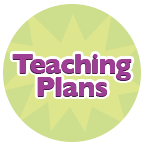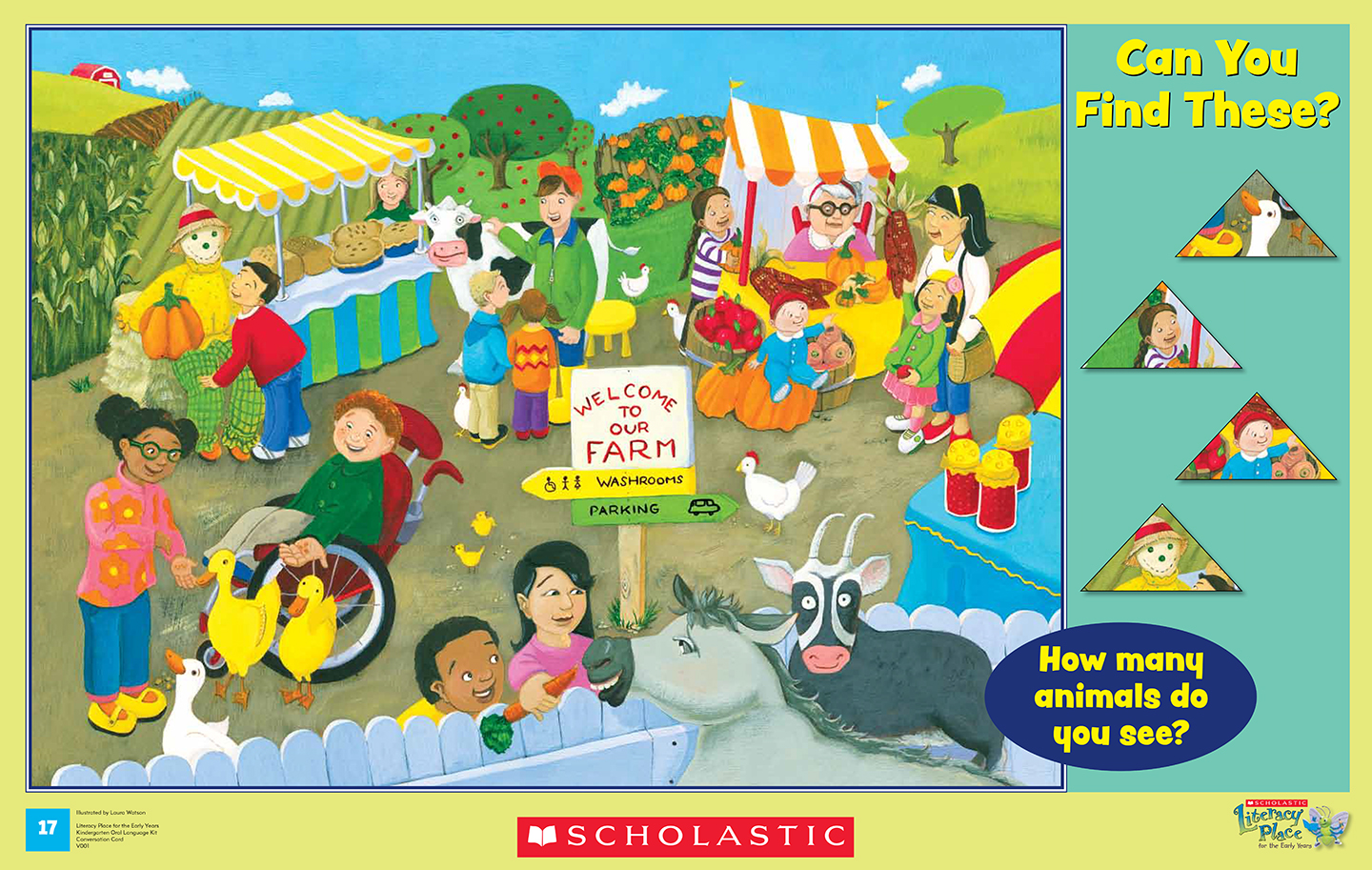Oral Language Teaching Strategy:
Use Open-ended Prompts Use open-ended prompts that invite thoughtful reflections and deeper responses.
Time: one 30-minute lesson or two 15-minute lessons
Materials: I-Spy Card #17
Grouping: whole class or small group
Assessment: Kindergarten Oral Language Assessment Scale
FOCUSING ON THE PICTURE
Teaching Tip: Remind students of the game ‘I Spy’ by asking them to find something that is a specific colour in the class.
- Show students the picture and ask them to look at it and think about what they see and what they think is happening.
-
Invite each student to share their ideas about the picture with a partner.
- Provide time for partner discussion and then invite a few partners to share their thinking with the group.
- Offer the following prompts to stimulate discussion:
- Who are the people in this picture?
- Where do you think they are? What clues in the picture make you think that way?
- What kind of day is it? (rainy, sunny, windy)
- What season is it? What clues in the picture tell you this?
This picture makes me think about the time I took my children to a fall harvest sale where they had a petting zoo.
What do you think is happening? Why do you think that? We don’t know exactly what is happening, but it is okay to suggest different things that make sense and fit the picture.
Teaching Tip: As you ask questions be sure that the questions prompt an answer that requires more than a “yes” or “no” response. This requires students to think deeper and more critically before responding. Ask questions such as, “Why do you like ice cream?” or “What makes ice cream so good?” rather than “Do you like to eat ice cream?”
GOING DEEPER
[Inferring/evaluating]- Tell students that this is an ‘I Spy’ card. Point out the features of an ‘I Spy’ text and ask:
- How will you find these small pictures inside the larger picture?
- How many animals do you see?
- As the students are looking for the exact matches, have students explain to their classmates the strategies they used to find the match.
- As students count the animals encourage them to use spatial relationship words such as ‘next to,’ ‘beside,’ or ‘in front of’ to describe the animal’s location in relationship to other objects in the picture.
Jenna: I see a cow in the picture!
Teacher: Where is the cow Jenna?
Jenna: It is beside the table.
Teacher: Which table, Jenna? Please describe it.
Teaching Tip: To build prior knowledge you may wish to use this conversation card prior to a farm trip or after a farm trip.
You may conclude the lesson at this point and do the second part on the next day, or you may decide to continue and do Connecting and Predicting as part of the first lesson.
CONNECTING
Teaching Tip: If you decide to do Connecting and Predicting on the second day, begin your lesson by reviewing the picture with the students.
[Making connections]- Ask students to connect their personal experiences with the actions and events in the picture. Prompts might include:
- Describe an event in the picture that you have had an experience with.
- When we look at the picture we think that it is autumn. What clues are in the picture to tell us that?
- Let’s look at different events in the picture and think about ways that we can describe these events.
- Tell us about a time when you fed an animal.
My nana took me to a farmer’s market once. It had lots of animals and things to buy.
PREDICTING
[Predicting]- Ask students to think about what might happen after this scene:
- What other things might these children do while they’re at the farm?
- What might the people do after they visit the farm?
- Ask students to think what this scene might look like in a different season. While students are sharing their ideas be sure to point out the pumpkin and corn crops as well as the vegetable stand. Ask students to explain why this wouldn’t happen during another season.
Teacher: I wonder what this farm would look like in winter.
Hannah: I think there would be a lot of snow and maybe the animals would be inside the barn.
LESSON EXTENSIONS
- Use the picture as the basis of a shared writing lesson. Divide a sheet of chart paper into four sections and label them ‘fall,’ ‘winter,’ ‘spring,’ and ‘summer.’ Ask students to brainstorm words that help to describe each season starting with fall. As students offer their suggestions record them on the chart paper using words and pictures.
- Use the shared writing as a shared reading text and read the words used to describe each season.
- Place the shared writing text in an area where students can read it during centre time.
- Use this conversation card with Conversation Card # 9 (girl and horse) and ask students to find similarities and differences between the two scenes. Record their ideas on a T-chart under the labels ‘same’ and ‘different.’
FOLLOW-UP IN CENTRES
- Place two pictures showing a similar scene at the writing centre. Invite students to create their own T-chart listing the similarities and differences between the pictures. Encourage students to express their ideas with pictures and words. Have students explain their T-chart to you or another student.
- Provide students with a variety of materials at the art centre so they can create sculptures, pictures, or paintings of their own farm scenes. Have them explain their scene to you or another student.
- In the drama centre, provide students with props to recreate the ‘I Spy’ scene.

